With Tuesday's release of the December S&P/Case-Shiller Home Price we learned that seasonally adjusted home prices for the benchmark 20-city index were up month over month at 0.8%. The seasonally adjusted year-over-year change has hovered between 4.6% and 5.8% for the last twelve months.
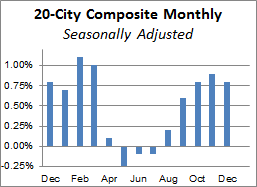
The adjacent column chart illustrates the month-over-month change in the seasonally adjusted 20-city index, which tends to be the most closely watched of the Case-Shiller series. It was up 0.8% from the previous month. The nonseasonally adjusted index was up 5.8% year-over-year.
Investing.com had forecast a 0.9% MoM seasonally adjusted increase and 5.8% YoY nonseasonally adjusted for the 20-city series.
Here is an excerpt of the analysis from today's Standard & Poor's press release.
"While home prices continue to rise, the pace is slowing a bit," says David M. Blitzer, Managing Director and Chairman of the Index Committee at S&P Dow Jones Indices. "Seasonally adjusted, Miami had lower prices this month than last and 10 other cities saw smaller increases than last month. Year-over-year, seven cities saw the rate of price increases wane. Even with some moderation, home prices in all but one city are rising faster than the 2.2% year-over-year increase in the CPI core rate of inflation."
"Sparked by the stock market’s turmoil since the beginning of the year, some are concerned that the current economic expansion is aging quite rapidly. The recovery is six years old, but recoveries do not typically die of old age. Housing construction, like much of the economy, got off to a slow start in 2009-2010 and is only now beginning to show some serious strength. Continued increases in prices of existing homes, as shown in the S&P/Case-Shiiller Home Price Indices, should encourage further activity in new construction. Total housing starts have stayed above an annual rate of one million starts per year since last March and single family home have been S&P DOW JONES INDICES PRESS RELEASE 2 higher than 700,000 units at annual rates since June. Housing investment continues its positive contribution to GDP growth." [Link to source]
The chart below is an overlay of the Case-Shiller 10- and 20-City Composite Indexes along with the national index since 1987, the first year that the 10-City Composite was tracked. Note that the 20-City, which is probably the most closely watched of the three, dates from 2000. We've used the seasonally adjusted data for this illustration.
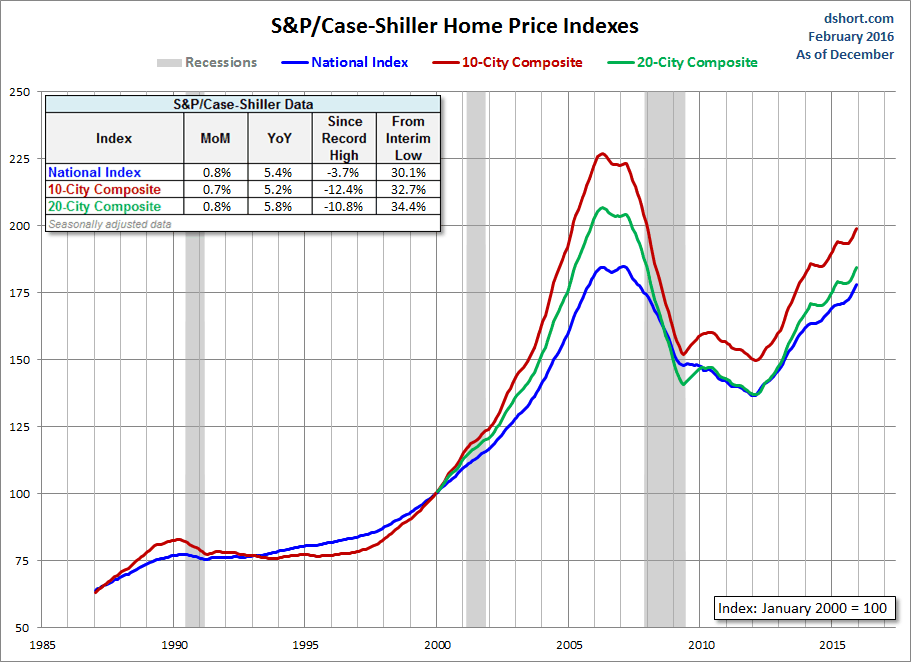
For an understanding of the home price data over longer time frames, we think a real, inflation-adjusted visualization of the data is an absolute necessity. Here is the same chart as the one above adjusted for inflation using a subcomponent of Bureau of Labor Statistics' Consumer Price Index, the owners' equivalent rent of residences, as the deflator. Among other things, the real version gives a better sense of the dynamics of the real estate bubble that preceded the last recession.
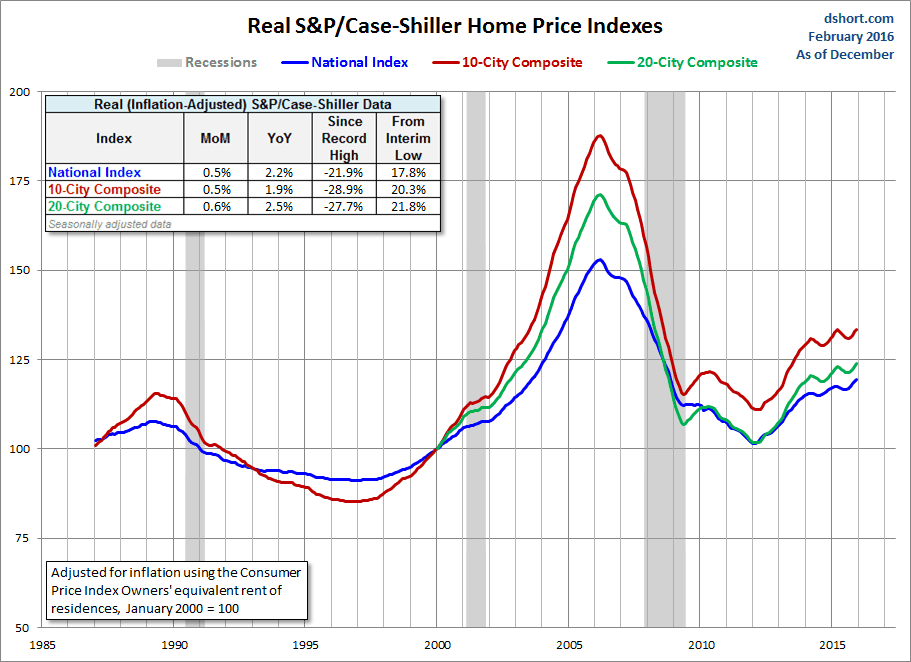
The next chart shows the year-over-year Case-Shiller series, again using the seasonally adjusted data.
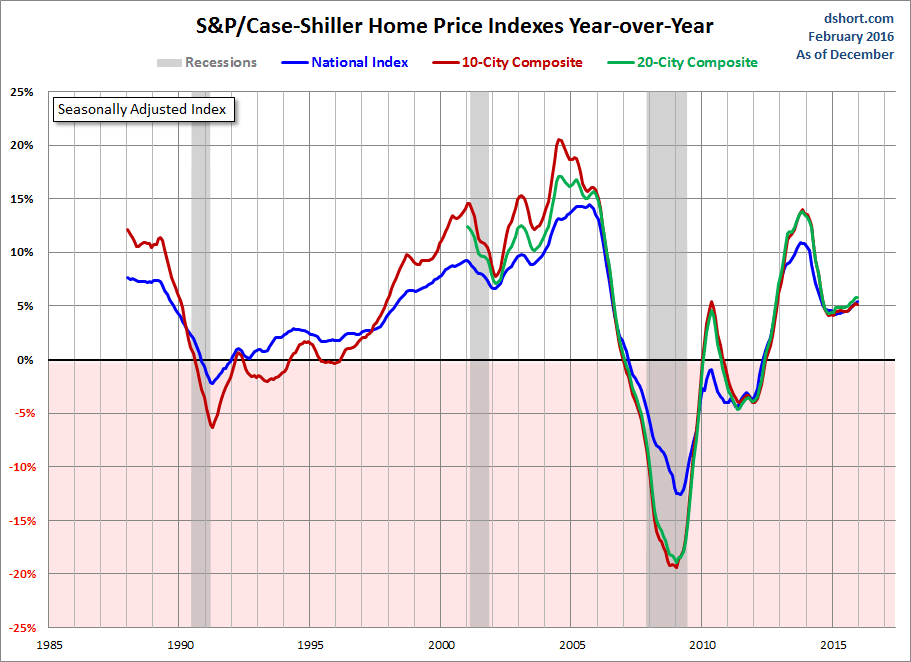
Here is the same year-over-year overlay adjusted for inflation with the Consumer Price Index owners' equivalent rent of residences.
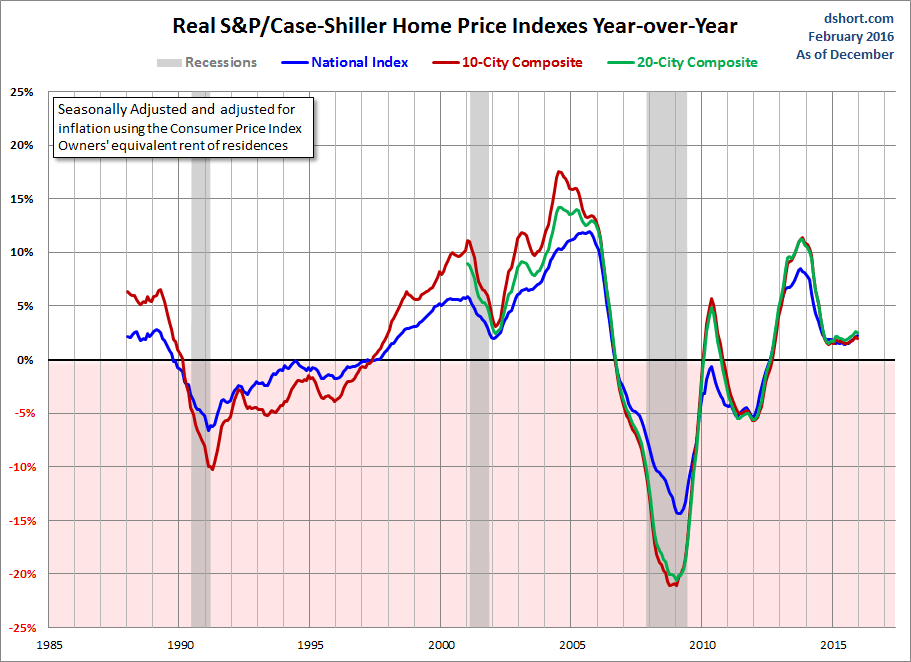
For a long-term perspective on home prices, here is a look at the seasonally and inflation-adjusted Case-Shiller price index from 1953, the first year that monthly data is available. Because the CPI owners' equivalent rent of residences didn't start until 1983, we've used the broader seasonally adjusted Consumer Price Index.
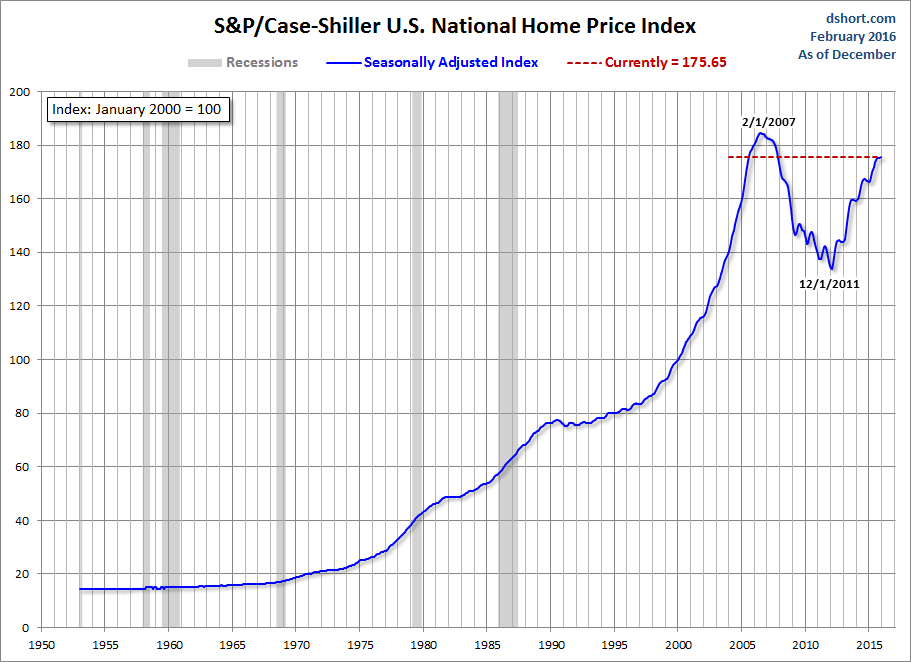
For additional perspectives on residential real estate, here is the complete list of our monthly updates:
